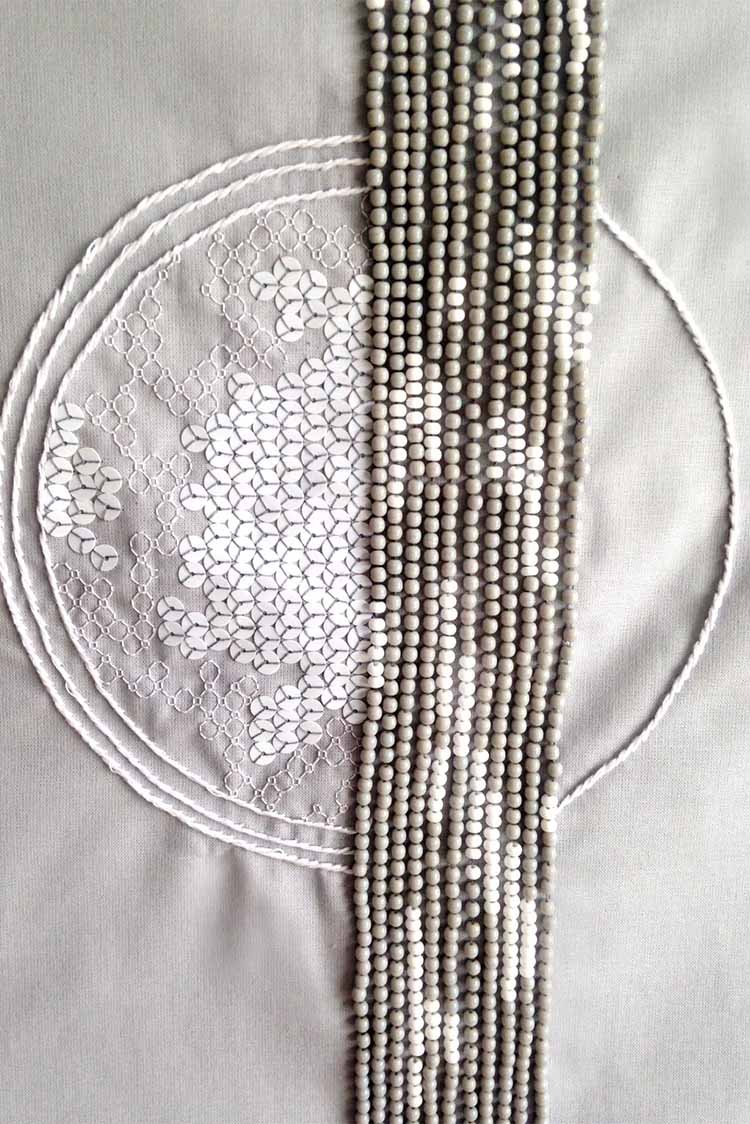Tree Ring | Time and Purpose in Textile Art
Materials: cotton base fabric with silk and cotton threads; glass and plastic beads; sequins
A section of tree trunk in Chatham Dockyard, it’s purpose unclear: is it a mooring post; firewood; or chopping block? It takes its place alongside a motley crew of iron rings; disused cannons; washed-up buoys; scrap metal. All now appear to be waiting for a new use and purpose. The wood of the trunk juxtaposed with the man-made materials reflects the passing of time in the architecture of the dockyard, where clapperboard & timber give way to steel girders and metal sheets.
The stump is weathered and worn, both from the elements and past use. It could be important, but not so much that it needs the upkeep of the architecture: it will be replaced in time.
The trunk’s rings are exposed showing the regular irregularity marking its time as a living, growing plant. Now the elements have attacked its core, the rings have split, breaking the circles; dirt and other matter have caught in the cracks discolouring and giving new textures. The bark is worn and chipped from something having been wrapped around and pulling on its once impregnable surface.
But for now the tree trunk waits for its new purpose and its solid form still stands firm for a while longer.
The embroideries in the collection try not to visually replicate the trunk, but to take the essence of the changes it has undergone. Areas of blackwork with it’s regular counted stitch pattern are broken by sequins or beads. Outlines of rings can be glimpsed, but the circle rarely completes. The irregularity of hand beading, both in the technique and the materials highlights imperfection. The juxta-positioning of the brittleness of the glass beads; sheen of sequins with the softness of silk threads reflect the changed interior of the trunk’s surface.
The designs are set onto the pattern of a man’s shirt sleeve, which could be seen as a tattoo of one of the many sailors who have passed through the docks. The shirt sleeve is marked out but not yet cut, again waiting to find it use.
Techniques: traditional hand embroidery stitches; blackwork; tambour and needle beading





